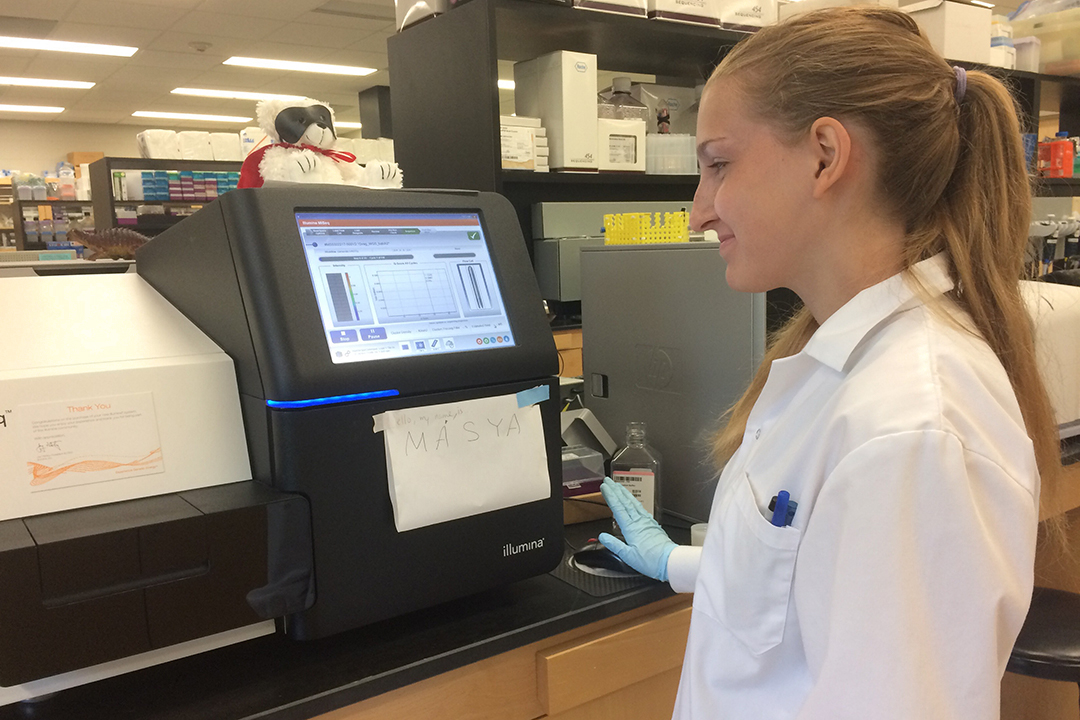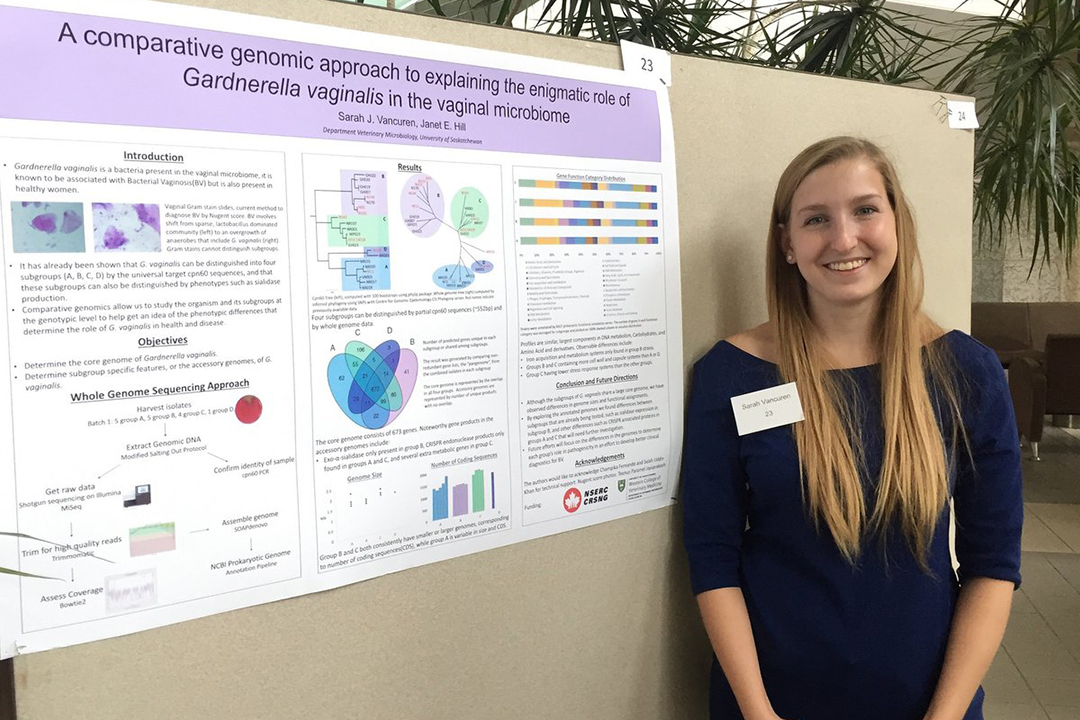
Understanding bacteria’s “blueprint” could improve women’s health
The bacterial population or microbiome of the human vagina could provide answers to some important questions about women’s health, and researchers are exploring the genetic material within one specific type of bacteria in order to determine some of these answers.
By Sarah VancurenGardnerella vaginalis is a hallmark species of bacteria found in bacterial vaginosis (BV), an infection that affects reproductively aged women. However, G. vaginalis is also found in healthy women – and that fact has led to further investigation by researchers from the Western College of Veterinary Medicine (WCVM).
“We have a lot of interest in the diagnostic potential of this information,” says Dr. Janet Hill, a WCVM professor who heads the Department of Veterinary Microbiology. “If you associate a particular microbial community structure with health, then if you see something different than that in an environment, it might be an indication of a risk for a negative health outcome.”
Hill and her research group at the WCVM’s Hill Lab have been studying the rich and diverse vaginal microbiome in order to gain a better understanding of some of the factors affecting women’s health.
While studying this complex bacterial community, they’re working to determine what constitutes a healthy vagina and what creates imbalances – differences in the vagina that can increase a woman’s susceptibility to infection and heighten the risk of pre-term birth.
Using several techniques that include conventional microbiology and DNA-based methods, the group has focused on studying the functions and interactions of the vagina’s bacteria population.
“Some of the earliest methods we had to study [micro-organisms] were visually – looking at them through the microscope – or, more importantly, growing them in culture in the lab,” explains Hill.
“The biggest limitation to those approaches is a lot of organisms that live very happily in the human body don’t live happily at all in the lab… which means in a study that you only use culture based methods, you may never see those organisms and they could actually be really important.”
By using DNA-based methods, the researchers are able to take advantage of new technological advances to study the organisms in the community with more specificity. These methods include sequencing technology that allows them to look at microbial communities at the genomic level. They’re able to distinguish organisms based on their fingerprint – on the blueprint of what makes them.
“By looking at the sequence data [of a sample], the sequence of an organism’s genome is essentially like a fingerprint, or you can think about it like a barcode, and by interpreting those barcodes it allows us to specifically identify organisms within that community,” says Hill. “There are huge amounts of information in that sequence data that we are working to try and decipher to put to use in diagnostics.”
The technology associated with these DNA-based methods has changed dramatically over the last few years, and research studies now produce very large volumes of data in a short time. As a result, labs have had to develop new approaches for handling and analyzing this sequence data. Biology labs now require more interdisciplinary work, and there’s a demand for expertise in the trending field of bioinformatics.
“[Bioinformatics] is a lovely blend of biology and computer science,” says Hill. “Analyses of the information and turning it into a form that helps us address biological questions is hard, and so as a result of that, we rely on this interdisciplinary work.”
Hill and her research group have already demonstrated that G. vaginalis has four subgroups that produce different virulence factors, which are part of the bacteria’s behaviour that are harmful to the host. Since virulence factors can increase the degree of damage that a microbe causes to its host, these differing virulence factors could cause variances in the occurrence of BV.
The scientists are currently working on sequencing several representatives of G. vaginalis from the different subgroups as they look for differences in the genes – including virulence – that may affect the traits expressed by the bacteria.
They will be determining the core and accessory genomes of the four subgroups to determine the similarities and differences among them. This data will then be annotated to help provide clues about the differing functions in these subgroups – information that will direct future studies of G. vaginalis.
Without the use of technology to find the genes or to recognize the patterns in the sequence data, the researchers would have had to conduct several laboratory experiments to study the organism – an approach that would be like looking for a needle in a haystack. This is because there are several different possible experiments that could yield several different results. Technology can refine these options and make data interpretation much simpler – by comparing genome sequences computationally, researchers can rapidly identify differences, allowing time spent in the lab to be used more effectively.
The computational approach of bioinformatics helps to answer the biological question of what makes strains of G. vaginalis different from each other. This research then generates further questions or hypotheses that can be used in future studies investigating how to differentiate the species of Gardnerella and develop diagnostic tools for identifying high-risk vaginal microbiomes.
Hill is grateful for the co-operation of so many people with such different areas of expertise:
“Our group has been very fortunate in having the opportunity to work with really skilled clinicians and clinical researchers who work in obstetrics and gynecology and women’s health . . . people interested in socio-health aspects of hygiene, sexual practices and how that might affect the vaginal microbiology . . . skilled microbiologists and bioinformaticians who have added a huge dimension to our work [by] allowing us to do bigger studies than we might have done before and to make the most out of the data we generate. To answer the questions we have requires all of those skill sets.”
Sarah Vancuren is a third-year student in the bioinformatics program at the University of Saskatchewan. She is originally from Fredericton, New Brunswick. Her story is part of a series of articles written by WCVM summer research students.

